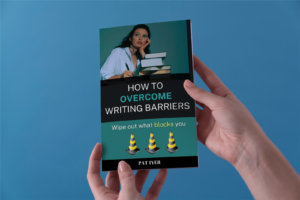 What is a short book? And how long should it be?
What is a short book? And how long should it be?
Thirty years ago, you would have had no trouble answering that question. A book was an oblong physical object that had either hard covers and a dust jacket or was a paperback. You turned the pages with your hand.
That description became obsolete with the advent of ebooks. We now know that a book can be electronic and weightless. We turn the pages by tapping the screen or pushing a button, and we measure how much we’ve read by percentages, not pages.
The way books get printed has also changed. The evolution of print on demand has made the idea of a print run less relevant.
These changes have opened the way to other dramatic reinterpretations of what a book is. How else can authors change the definition of “book” into a format that helps them deliver their messages?
The length of books changed. Shorter attention spans means shorter books. Some authors I’ve interviewed have broken free from the idea that a book must be around 25,000 words. They want to share ideas and concepts in a format that doesn’t require extensive reading. Here’s how two authors accomplished this goal.
A Short Book Can be 4,000 Words
Charla Anderson, an airline stewardess for 34 years and certified trainer in the Zig Ziglar legacy, wrote a book entitled, Candy Bar Hugs: It Doesn’t Take Much to Make a Difference. It’s 4000 words long. She calls it a business card book, one that promotes her coaching and speaking business. It’s available in print, ebook, and audiobook versions.
Her inspiration for this book came from her desire to spread love and kindness. As part of her practice, she would ask the checkout person at a store what their favorite candy bar was and would offer to buy it for them. She’d also ask if they would mind her giving them a hug. (This is pre-Covid.)
The result was, Candy Bar Hugs, a small book with a simple, clear—and big—message.
From 375 Pages to 101 Tips
We know that reading attention spans are decreasing. How can authors capture readers’ attention?
Joanna Brandi found an answer. She had a contract to write a 375-page book, but she had never written a book before. When she called a friend for advice, the friend said she wouldn’t have time for a book that long.
Joanna asked a crucial question. “What would you read?” The friend said she’d like a book with one unique idea on a page. Joanna recoiled at the idea of what she called Twitter reading, and the friend responded by saying, “I’m really busy, and I want you to do something that I can read no matter where I am. I can pick up a page, I can learn something from it.”
Joanna called a publisher she knew and pitched the idea. The publisher loved it, and the book became Winning at Customer Retention: 101 Ways to Keep ‘Em Happy, Keep ‘Em Loyal, and Keep ‘Em Coming Back. This happened 25 years ago, back in the era of print runs, and the first run was 10,000 copies, a lot for those days.
She has since written two more short books, available on Kindle, and in hardcover and paperback.
Other Formats for Very Short Books
If you, too, are short on time but have something you think can give value to readers, I would recommend exploring this area.
And watch what I am doing in this next year. You’ll see me publishing a whole bunch of short books. My first one Is Overcoming Writing Barriers– just 65 pages packed with tips. Order it here.
On the website “Write Non-fiction Now,” Nina Amir describes 10 formats for short books, including quotation books, benefits books, and Q & A books.
If you continue to be confused about what format would best suit your ideas, call me – I’m a writing coach who will help you organize your thoughts to have the maximum impact in the minimum space for your audience. Reach me at patiyer.com/contact.
